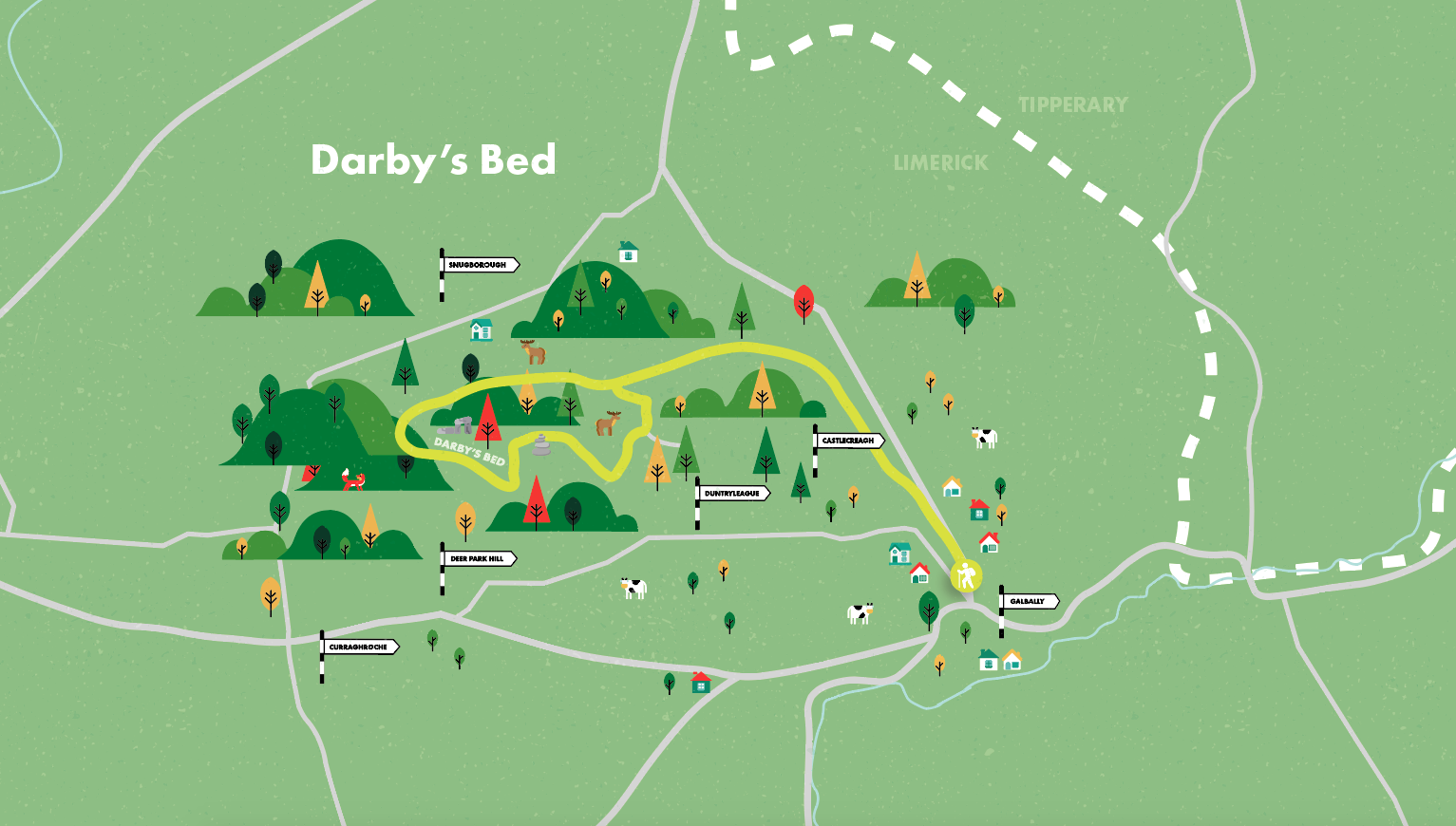Darby’s Bed Loop
- Forestry Tracks
- Green Paths
- Galbally Square Carpark in Co. Limerick
This loop which starts and finishes in the village of Galbally - at the heart of Ballyhoura Country - takes you to a high point of 265m north-west of the village. Here there is a megalithic passage grave known as the Fort of the Three Pillar Stones. The fort is estimated to be 6,000 years old and is known locally as 'Darby's Bed'.
After a short walk along the road out of the village, you'll enter the trail proper on your left. As you follow the trail, you'll notice white signs directing you to a passage tomb. Follow these to divert from the trail briefly and visit this historic site- remember to return to the white sign to continue the loop.
The tomb has a long almost inaccessible entrance passage, and the roof rises likes steps to the top of its chamber and is regarded as being similar to megalithic tombs in Brittany, France. The entrance passage faces north-west in line with the midsummer sunset. According to fable and folklore, it is believed that it is the grave of Olill Olum, who was one of the early kings of Munster.








